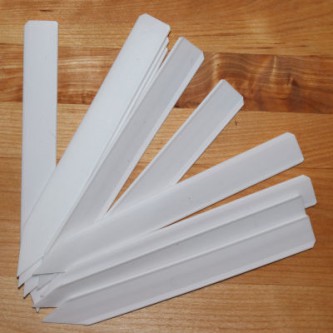Hot Pot pepper Solar Flare is native to China. Another name for this pepper is Hangjiao 3. It is an attractive, beautiful and eye-catching pot pepper on which long, straight hot peppers grow. Some peppers curl at the tips. The hot peppers can grow up to 20 cm long and are about 2 cm wide. the hot peppers ripen from green to bright orange/yellow. This hot pot pepper was bred by space scientist Jiang Xingcun who sent hot pepper seeds to satellites in space, and discovered that mutations occurred in terms of yield, fruit size and nutritional value. The aim of this project was to keep up with the demand for food in China. Since then, more than 400 seed varieties have been sent to space in this project. This Solar Flare is the hottest pepper to emerge from the Hangjiao Project. These hot peppers have juicy flesh with a slightly sweet flavour and modest heat. This plant can be grown very well in large flower pots. So that even people with limited space (e.g. only a balcony) can still grow their own hot peppers.
Chilli peppers are the fruits of the hot pepper plant. They are related to the pepper. Pepper originates from Central America and South America. It was spread all over the world by the Spanish, Portuguese and Dutch. They grow best under sufficient heat. In the living room or in an unheated greenhouse in our climate (the Netherlands). Another name for chilli pepper is hot pepper, red pepper, Spanish pepper and Lombok. Chillies come in many different sizes and colours. For example big, small, red, yellow, white, purple, brown, orange and green. Chillies can be eaten fresh, dried, in powder or as flakes. You can dry chillies yourself by hanging them upside down in a dry, warm and well ventilated room or by drying them in a very lukewarm oven (70 °C) and in a special drying cabinet. Pepper powder is also called cayenne powder and chilli powder. Chillies contain many healthy nutrients such as capsicum, capsaicin, bioflavonoids, vitamins and minerals. Capsicum is also used in medicines to treat, for example, a runny nose and colds. Capsaicin is the substance in peppers that makes them so pungent. Pepper also helps to prevent diseases such as colds, arteriosclerosis, heart disease and inflammation. Pepper also has an analgesic effect, gives a feeling of happiness, helps against sinusitis, colds, inflammations, cardiovascular diseases, arteriosclerosis and against cold feet in the winter.
Pepper is very healthy and versatile. It contains, among others, the vitamins: A, B1, B2, B3, B5, B6, C, E and K. And the minerals: phosphorus, iron, potassium, copper, manganese and magnesium. It also contains many antioxidants such as: alpha-carotene, beta-carotene, cryptoxanthins, lutein and zeaxanthin. You can boil, steam, stew, grill, bake, use in oven dishes, in stews, add finely chopped to salads and raw vegetables, barbeque, wok and add to Indonesian, Mexican, Italian, Spanish, Moroccan and other dishes. You can also make sambal, chilli jam and chilli sauce from chillies. You can also add chillies to sauces, soups and other dishes which can use some spice. Chillies also contain carbohydrates, protein, fibre and few calories. Chillies are delicious in combination with: minced meat, beef, pork, chicken, lamb, chocolate, cocoa, rice, noodles, pasta, olive oil, ginger, soy sauce, cumin, coriander, chives, basil, thyme, rosemary, paprika, butter, apple, curry, parsley, red wine vinegar, white wine vinegar, balsamic vinegar, cheese, Parmesan cheese, mustard, coconut milk, milk, tomato puree, oregano, red wine, cinnamon sticks, gingerbread, apple syrup, lemon and lime. And with vegetables such as: leeks, onions, garlic, peppers, tomatoes, potatoes, carrots, cauliflower, kale, Brussels sprouts, broccoli, spring onions, shallots, lentils, chickpeas, green beans, snow peas, red cabbage, cucumber, mushrooms, pointed cabbage, white cabbage, kidney beans, brown beans, bean sprouts and lettuce. Be careful not to eat too many hot peppers. It can cause stomach problems such as heartburn. Also, after cleaning and cutting hot peppers, do not touch your eyes with your hands. Chili peppers can also help you lose weight. Hot food is more likely to make you feel full. And chilli gives your metabolism a boost. Hot food makes you feel hot and this speeds up your metabolism. As a result, you burn more calories. Fresh red peppers can be kept in the vegetable compartment of the fridge for 5-7 days. You can also keep peppers in a glass jar filled with olive oil. In this way, the peppers can be kept for months (5 - 6). You can also freeze them. Cut the stalks from the chillies. Wash them well and freeze them whole, in this way you can keep them for about 12 months. Non hardy perennial. Height: 45 - 60 cm. Scoville units: 5.000 - 10.000.









